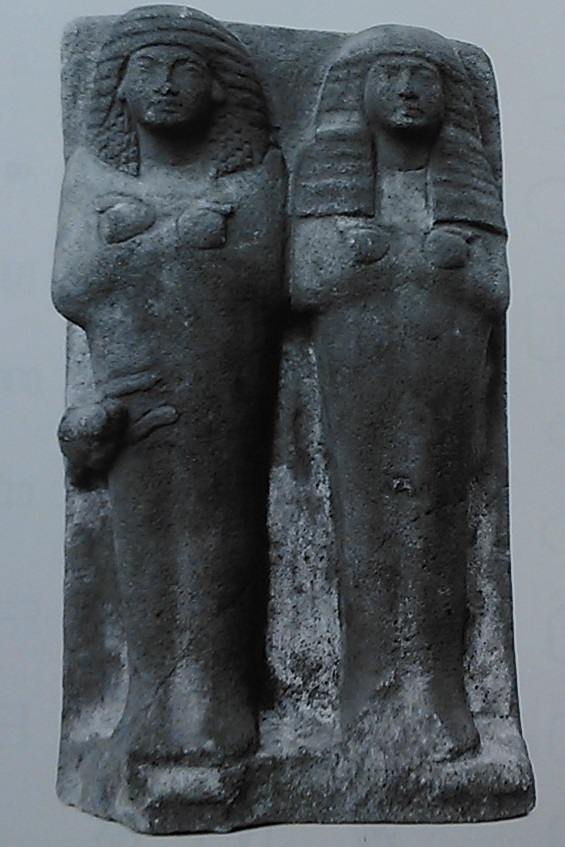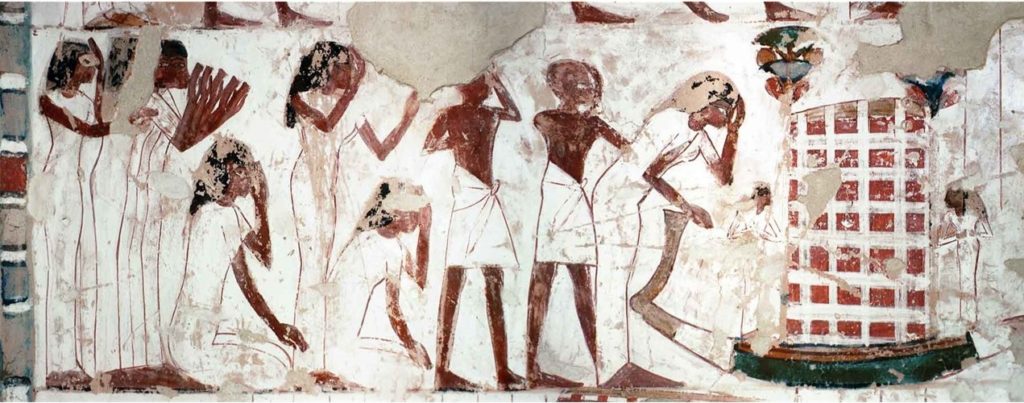Ancient Egyptian archaeology is plenty of small remains which are big in information.
For instance the ushabti of Pay and Repit is a small artifact, which goes unnoticed but has a deep message about the sexual stimulation of the dead, a very important aspect of the ancient Egyptian funerary ritual.

In Egypt there are also small archaeological sites, which are barely paid attention but which are really nice and interesting. This is the case of the Theban Tomb TT175.
Theban Tomb TT175.
TT175 is a small anonymous tomb located in el-Khokha (Luxor), an ancient Egyptian necropolis, in which most of the tombs date from the New Kingdom. TT175 is near the Theban Tombs TT176 of Userhat (Dynasty XVIII) and Theban Tomb TT177 of Amenemopet (Dynasty XIX)

The tomb is unfinished, because there are not texts on the walls, so it is impossible to know its owner. But the whole decoration has been published bye Lise Manniche ( Manniche, L. The Wall Decoration of Three Theban Tombs (TT 77, 175, and 249), CNI Publications 4, Copenhagen 1988). The style of the decoration reminds to the Dynasty XVIII, so probably belongs to this period of the ancient Egyptian history.
The funerary ritual of TT175
A very interesting scene of this tomb is the one depicting the funerals. It shows how the ancient Egyptian artist could compress a whole ceremony with the main parts of it.

At first sight we appreciate four main sections from left to right: a group of mourners, the funerary boat, the slaughter of an ox and the funerary priest performing in front of the mummy.
The sections are in perfect order and that is what makes me see in fact that the scene is divided in two main parts.
Two Main Parts: Public and Private.
The Public Part.
The first part would be the one formed by the group of mourners and the funerary boat. Those ones were the common mourners (mainly women and sometimes some man), an ancient Egyptian collective who during the funerary procession cried, screamed, raised their arms, were kneeling or bending their bodies, shook their hair…they showed a dynamic attitude.

They are facing the funerary boat, that transported the catafalque with the deceased. And it was flanked by the two professional mourners. These two women played the role of Isis and Nephthys and during the procession they stood out for their immobility.
So both (common mourners and funerary boat) would be the public part of the funeral, that is the procession on the way to the tomb.
The Private Part.
The second part would be the one formed by the sacrifice of the ox and the performance of the funerary priest. In fact both depictions (slaughter and sem priest’s performance) represent the ancient Egyptian practice of the Opening of the Mouth Ceremony.

One of the rites that were part of this ancient Egyptian ceremony was the sacrifice of an ox as the sethian victim. That was made for revenging the death of Osiris at the hands of Seth. Meanwhile the two professional mourners did their mourning rite to help in the dead’s resurrection.
But, do we see mourners here? Yes. Although just partially. I will not say too much. Just look at the image and notice that from the damaged part of the scene two raised arms seem to appear. They could be the professional mourners in the mournig rite of the Opening of the Mouth Ceremony. At that moment the “controlled attitude” during the procession disappeared and they played a very active role.

The Opening of the Mouth Ceremony was leaded by the funerary priest. He had an active role during the whole ritual performing different actions in favor of the mummy (specially opening the mouth with sacred tools). At the end the dead was regenrated, got again all vital functions and could resurrect in the Hereafter.
So, this second part was the hidden one, because the Opening of the Mouth Ceremony was a ritual that took place privately, most likely inside the grave.